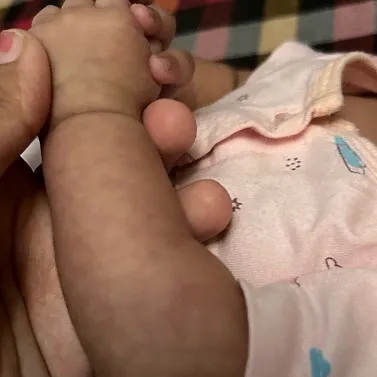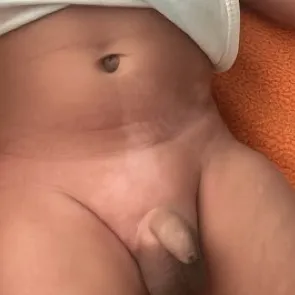HomeQuestions & AnswersMy Baby is 3 months old and has skin discolouration, what might be the reason?
Want to share your parenting queries and get answers
Get Solutions and advice from other parents and experts
Ask a QuestionMom of a 1 yr 6 m old girl1 Year ago
Q.
My Baby is 3 months old and has skin discolouration, what might be the reason?

Answer
Follow
Report Abuse
Share
1 Answer
 POOJA KOTHARIMom of a 8 yr 9 m old boy1 Year ago
POOJA KOTHARIMom of a 8 yr 9 m old boy1 Year agoA. Skin discoloration in a 3-month-old baby can be caused by various factors, some of which are normal and others that may require medical attention. Here are a few possible reasons for skin discoloration in infants: ### 1. **Birthmarks** - Many babies are born with birthmarks or develop them shortly after birth. These can be various colors, including pink, red, brown, or blue. Common types include **mongolian spots**, **stork bites**, **port-wine stains**, or **café-au-lait spots**. ### 2. **Jaundice** - Jaundice is common in newborns and typically causes a yellowish tint to the skin and eyes. It usually appears within the first few days of life and is caused by elevated levels of bilirubin in the blood. While jaundice often resolves on its own, severe cases may require medical treatment. ### 3. **Eczema or Atopic Dermatitis** - Eczema can cause red, dry, and sometimes discolored patches on the skin. Babies with eczema may have a family history of allergies, asthma, or eczema. ### 4. **Infantile Hemangiomas** - These are benign (non-cancerous) growths of blood vessels that can appear as red or blue discolorations on the skin. They often grow during the first few months of life but usually start to shrink on their own over time. ### 5. **Skin Irritation or Rash** - Irritants such as soaps, detergents, or fabrics can cause skin rashes or changes in skin color. Diaper rashes or heat rashes can also cause redness or discoloration. ### 6. **Hyperpigmentation** - Darker patches of skin can sometimes appear due to increased melanin production. This could be caused by mild trauma, like rubbing or scratching, or may be more prominent in certain areas due to natural skin variation. ### 7. **Vascular Issues** - Conditions like **acrocyanosis** (a bluish discoloration of the hands and feet) can occur due to immature blood circulation in newborns. This is generally harmless and resolves on its own. ### 8. **Infections** - Some skin infections, like fungal or bacterial infections, can lead to discoloration. Ringworm, for example, may cause round, discolored patches on the skin. ### 9. **Genetic Factors** - Certain genetic conditions can cause skin discoloration or pigmentation changes. For example, **vitiligo** causes white patches due to the loss of pigment-producing cells. ### 10. **Underlying Health Conditions** - Rarely, skin discoloration could be a sign of an underlying health issue, such as a metabolic disorder or a hormonal imbalance. ### What to Do If your baby has skin discoloration that is persistent, spreading, or accompanied by other symptoms (such as fever, poor feeding, lethargy, or irritability), it’s important to consult a pediatrician. The doctor can assess the skin changes and determine if further evaluation or treatment is necessary. If the discoloration is minor and not causing discomfort, the doctor might suggest simply monitoring it for any changes.
Report Abuse
ADVERTISEMENT
ADVERTISEMENT
SIMILAR QUESTIONS
Guardian of a 2 m old boy

Answer
Follow
Report Abuse
Share
Guardian of a 2 yr 1 m old boy
Answer
Follow
Report Abuse
Share
Mom of a 9 m old boy

Answer
Follow
Report Abuse
Share
Guardian of a 9 m old boy
Answer
Follow
Report Abuse
Share
ADVERTISEMENT
ADVERTISEMENT
Father of a 2 yr 9 m old boy
Answer
Follow
Report Abuse
Share
Mom of a 2 m old girl
Answer
Follow
Report Abuse
Share
Mom of a 3 yr old girl
Answer
Follow
Report Abuse
Share
Guardian of a Newborn boy

Answer
Follow
Report Abuse
Share
ADVERTISEMENT
ADVERTISEMENT
Guardian of a 11 yr 4 m old girl
Answer
Follow
Report Abuse
Share
Father of a 7 m old boy
Answer
Follow
Report Abuse
Share
SUGGESTED ARTICLES
Do you know any solution to this question?Let’s go to the app - To help out fellow parents & to get answers to your questions
Add An Answer
Add An Answer
Add An Answer
Ask a Question
This question is being asked for:
Your identity will not be revealed
POST





.svg)
.svg)
.png)

Post Answer